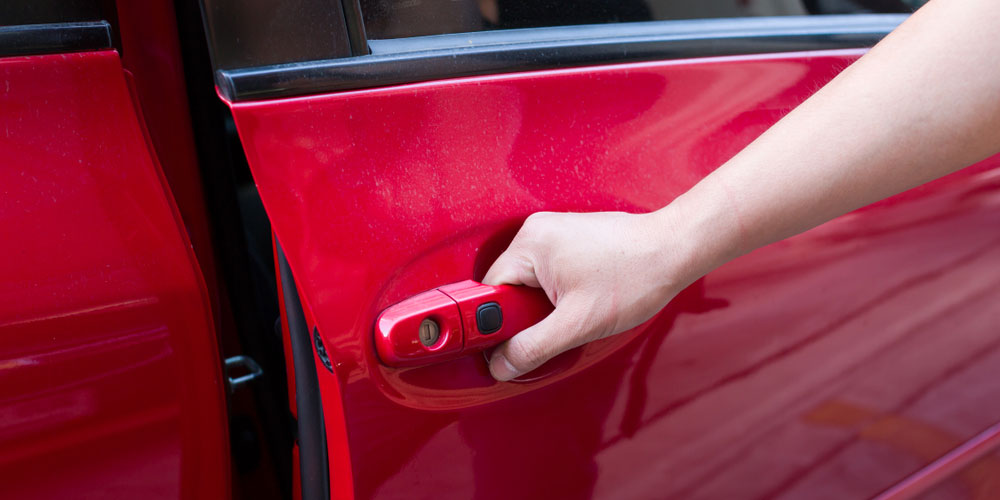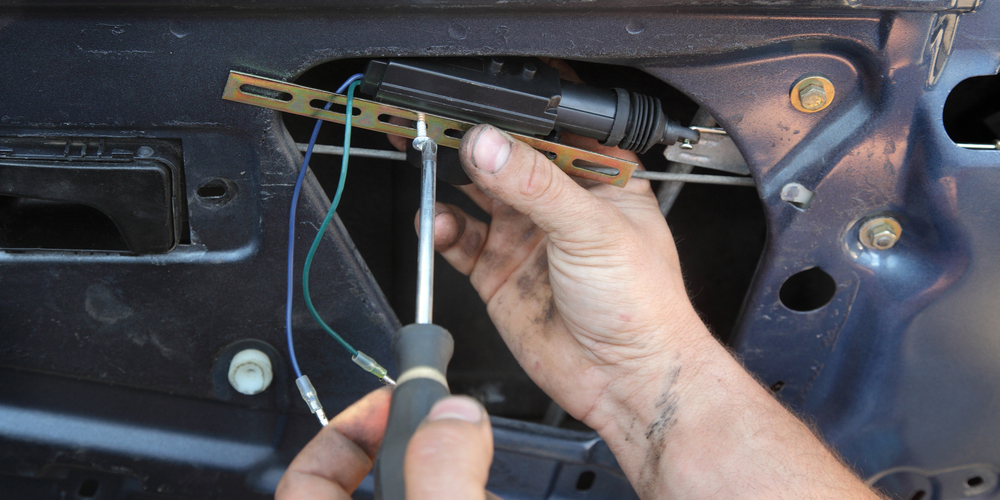Lock Blog
A resource for consumers, locksmiths, and security professionals
A resource for consumers, locksmiths, and security professionals

It is important to fix a sticky car door lock before it results in a broken key or fully broken lock. Rather than look up how to break into your car a few months from now, it is best to tackle the issue of a car lock sticking early.
Here is what you need to know about dealing with a sticky car door:
Every lock deteriorates with time and use. The most common sign of beginning deterioration on vehicles is a car lock sticking. Basic lock maintenance can bring your car door back from a sticky car door lock to a fully functioning lock before it breaks or becomes more damaged.
You can often fix a sticky car door lock instead of replacing it. If you wait to act and continue to use a sticky car door, it increases the likelihood of further damage. A sticky car door lock can even lead to a broken car key, especially if your car key is sticking in the lock.
The best door lock lubricant will be dry (not oil-based). These products can use graphite, silicone, or a synthetic blend but should not be leaving behind residue that collects dirt and dust. Also, be cautious of staining as these sprays can discolor a vehicle’s paint job.
If lubrication does not solve the problem of a sticky car door lock, you are looking at a higher cost to repair car door locks. These more complex tasks can involve intensive labor and the purchasing of replacement parts. In some circumstances, it will be better to call a locksmith.
The issues that cause a stick car door lock are numerous, but for the sake of brevity, we will keep it to the main five. By understanding the reasons for a car lock sticking, you can more easily determine the best solution and prevent the problem from returning.
The main causes of sticky car door are:
Driving through or even parking in dusty or wet areas can lead to a gradual build-up of debris that leads to a car lock sticking. Dirt can also accumulate quickly if you are off-roading or placing the vehicle in situations where there are significant amounts of dust, dirt, mud, sand, etc.
Dirt causes a sticky car door lock by jamming up the various internals of a door. For example, you may need to fix a car door latch or lock cylinder clogged by washing it or spraying some lubricant. It is rare that the internal assembly will be blocked by dirt, though it can rust or break.
The uncoated metal of a car will rust when exposed to moisture, and this includes the metal components of a car door lock assembly or lock cylinder. Because these components are inside the door, they are rarely accessible, so they can be cleaned properly.
It is important to protect classic cars from rust as finishes wear down. Oxidized metal has a similar effect to dirt, but as the internals are clogged, the metal is also weakened. So while you are forced to apply more force to open a sticky car door, you are more likely to break parts.
Ice only forms in the presence of moisture and cold, which means there are many climates where this is not an issue. And even in cold and wet areas, a car can still be properly stored, so there is no risk of ice forming in or around the car door.
A frozen car door is a two-fold problem because the ice is keeping the door from opening, and the thawing ice can lead to rust. With a car lock sticking from ice, make sure that clearing out the ice does not cause a sticky car door lock down the line from rusting.
A sticky car door lock may be due to parts wearing down, which leads to parts not reaching or moving adequately. This happens naturally to all locks as the grinding of close tolerances shaves off small bits of material. Eventually, this misshapes parts to the point of malfunctioning.
You can reduce wear by not locking or unlocking the car unnecessarily. But with a car lock sticking from wear, you will need either full or partial replacement. For example, when the wafers in a lock cylinder wear out, you can rekey a car lock and replace those parts with new ones.

Now that you have a better idea of what is causing your sticky car door lock, it is time to find the appropriate fix. Keep in mind that all information is rather general, as specific processes vary between makes, models, and years. But the four solutions outlined below will always work.
You can fix a stick car door if you:
The steps for cleaning a sticky car door lock vary depending on the substance being removed. However, the first step is always to figure out what needs to be cleaned. With a car door lock stuck in the lock position, manipulate the lock with the key, remote, interior switches, etc.
For a car key sticking in a lock, clean the cylinder. If the door is unlocked but needs a few tugs to open, clean the door latch. When a car door will not open from the inside or outside or is sticky no matter how you try to lock it, you likely need to clean the car door lock assembly.
A lock lubricant will free up most dirty locks. Frozen locks should use a lubricant that lowers the freezing point of a surface, so ice does not return. Rusted parts should be polished, so they do not easily rust again, but they can be cleaned with a rust removal spray or lubricant.
Many processes fall under the umbrella of car door lock repair, but it most often refers to fixing the lock assembly housed inside the car door. Even with a car lock sticking because of a lock cylinder, accessing that cylinder requires accessing the lock assembly.
With the door panel removed, attempt to lock and unlock the door. With a stick car door lock, you should be able to see the assembly attempting to move. Trace the movement and find what is causing the hang-up. From there, you can lubricate, reconnect, weld, etc., as needed.
If the car lock sticking is the trunk, car trunk lock repair follows a similar process. However, trunk locks are often more difficult to access. The labor is also more difficult due to the angle you have to work at to access an open car trunk.
Though the repair process can involve replacing small parts, this section is going to focus on full replacement. This is the most extreme solution for a sticky car door lock, and should only be used when the problem with the lock is only going to get worse.
There are also issues where parts are not available for a partial replacement. For example, a worn cam on the back of the lock cylinder may be worn down. But if that cam is not a separate piece, you have to replace a car door lock cylinder rather than just the worn part.
One of the main problems with replacement is access to the parts and buying precisely what you need. If you are not going through a professional service for parts, it will be your responsibility to find the part that will properly replace the defective part.
Contacting a car locksmith is the best way to fix a sticky car door lock. A professional technician will be able to diagnose your issue, find a solution, and have access to any parts you need.
The value of a proper diagnosis cannot be overstated, especially if you have a very particular issue, such as your car door lock sticks in hot weather. This could be an issue with plastic deformation, or it could be an issue with the battery in your car key fob.
And if your key fob won’t unlock doors or you have a key sticking in the car door lock, the problem may not be with the lock. Knowing what is really causing a sticky car door lock always saves time and money.
Dealing with a sticky car door lock starts with figuring out what has gone wrong. Is there a blockage caused by dirt, rust, or ice? If not, has a part merely worn out? Once you understand the problem you are trying to solve, you can move on to finding a practical solution.
Cleaning will solve issues with dirt, rust, and ice. But steps should be taken after cleaning to make sure the problem does not immediately return. If cleaning will not solve the issue, you will need to repair or replace the troublesome part.
For more help with solving the issue of a car lock sticking, check if United Locksmith is currently servicing your neighborhood. But for any general thoughts or questions, please leave them in the comments section below.
Category: Automotive, Lock Types, Safety & Security